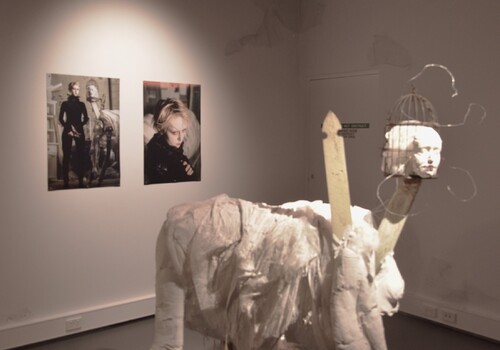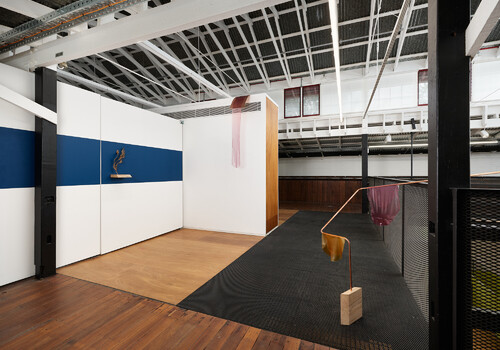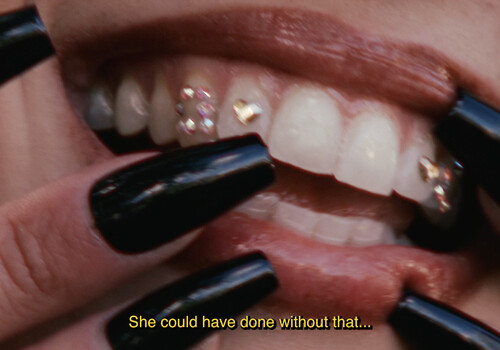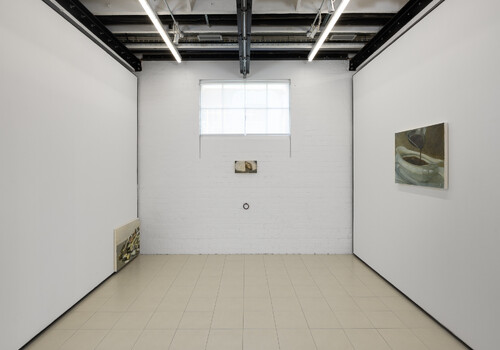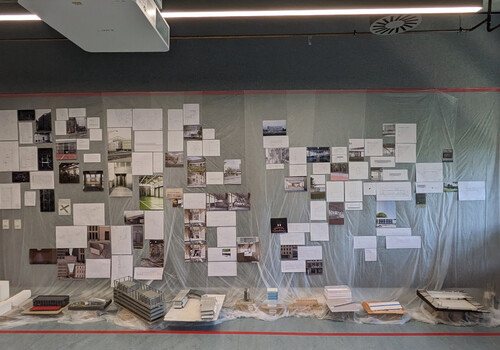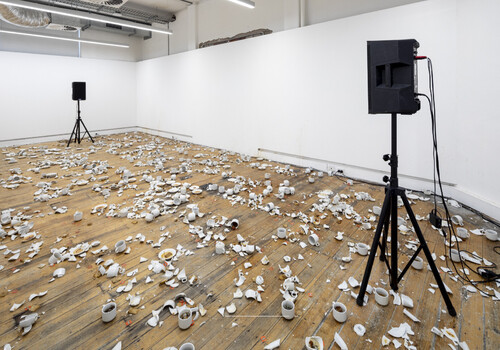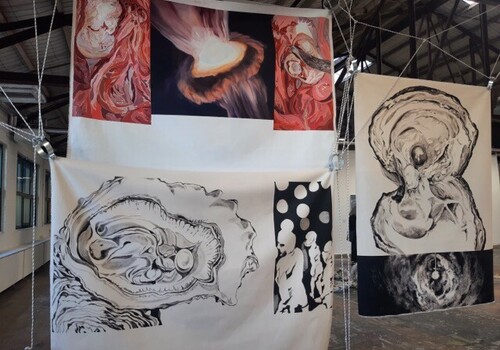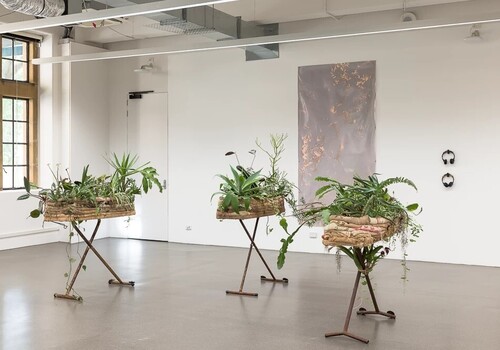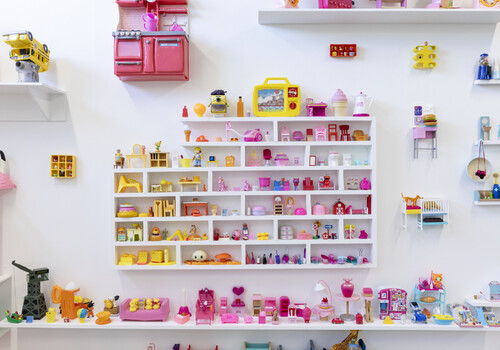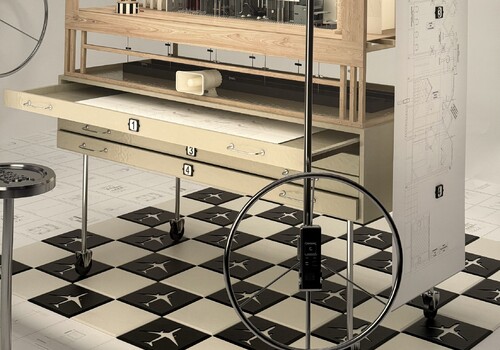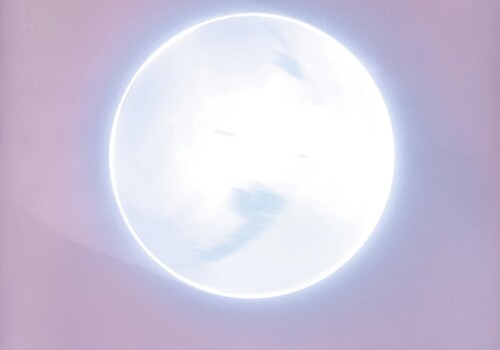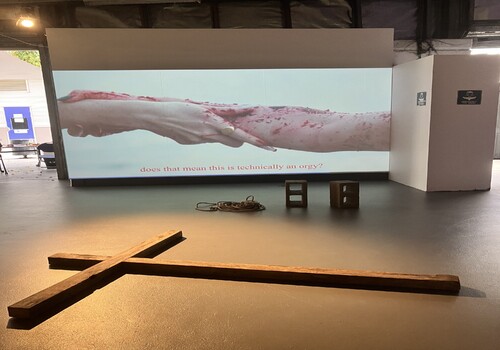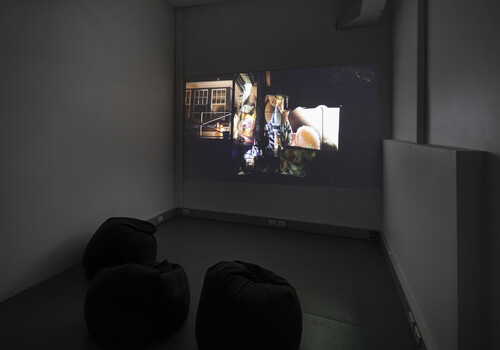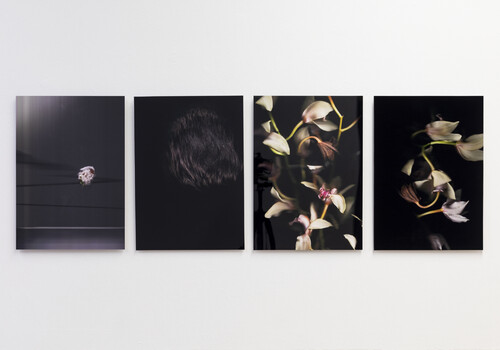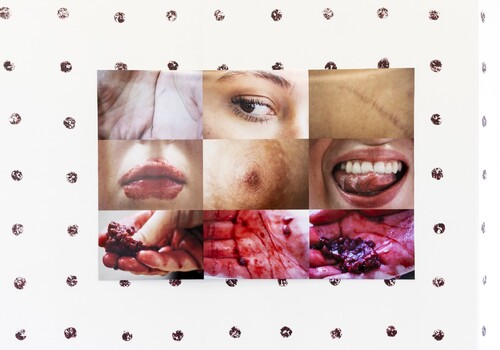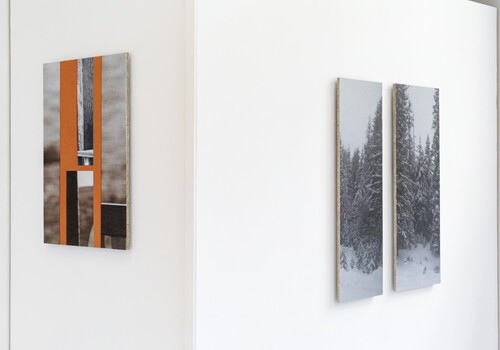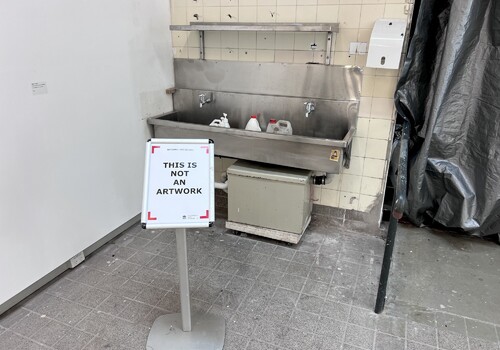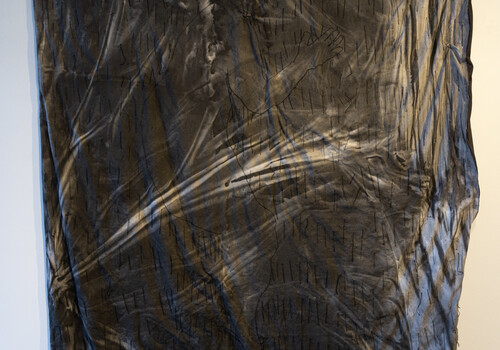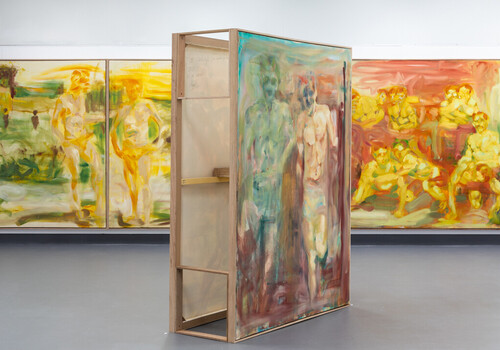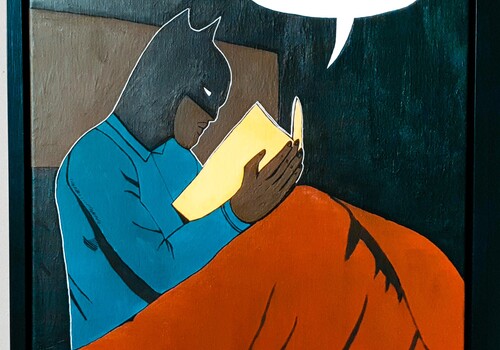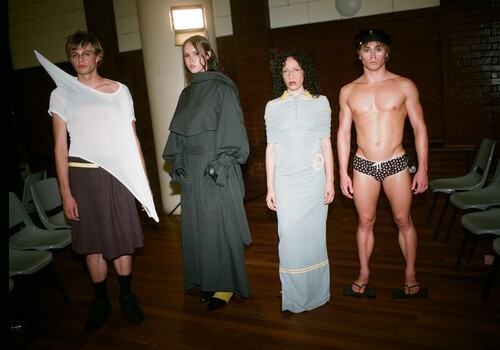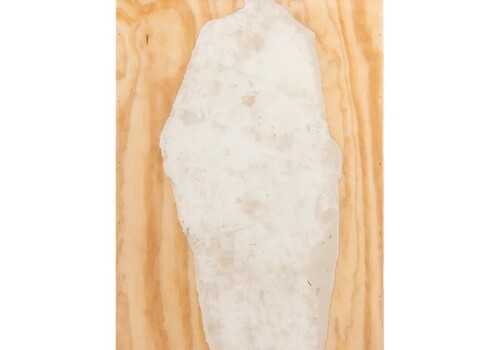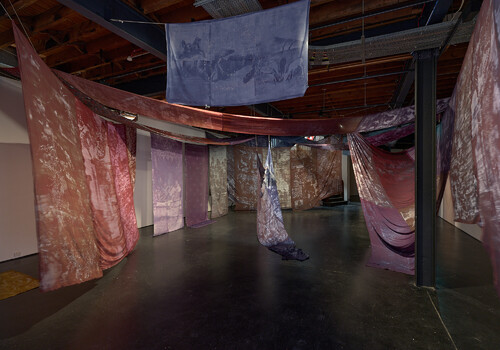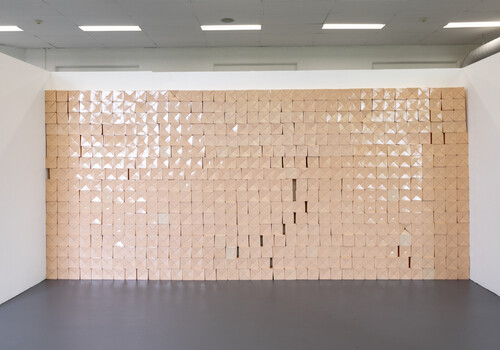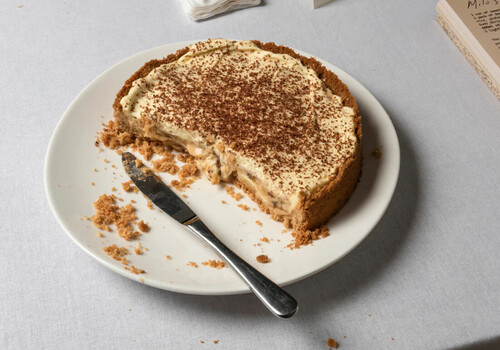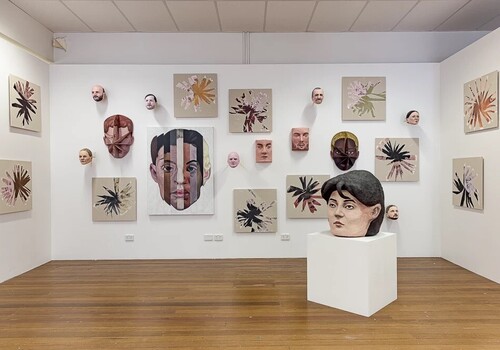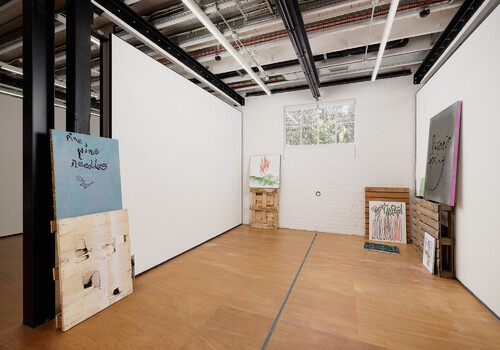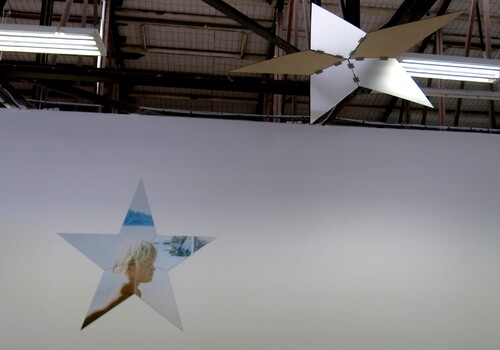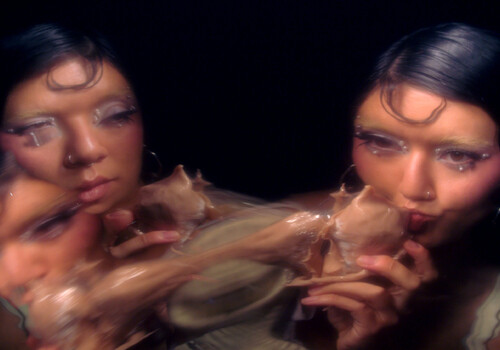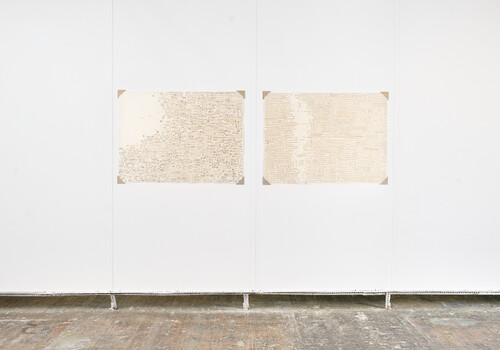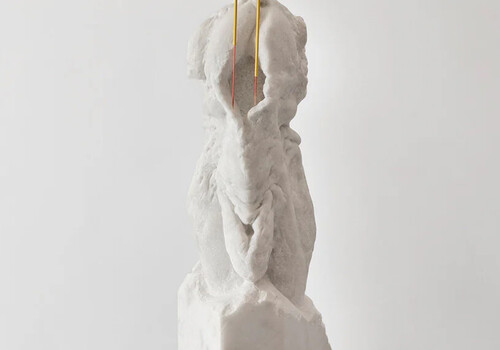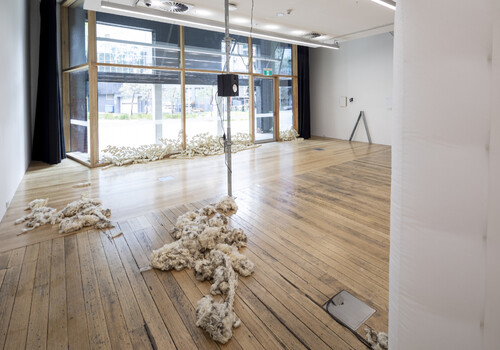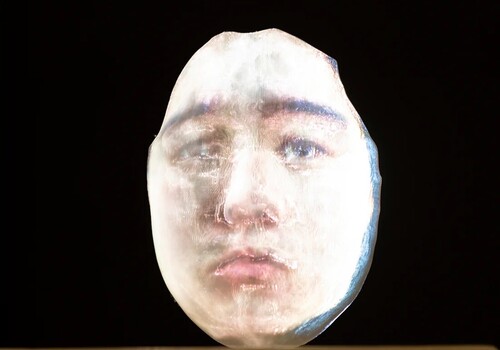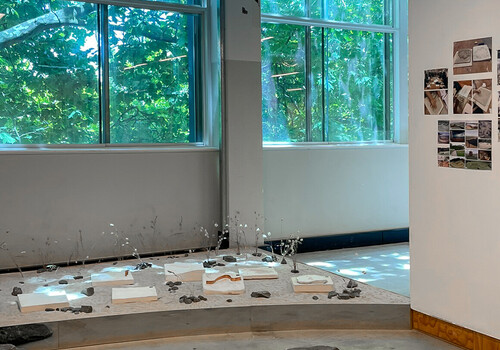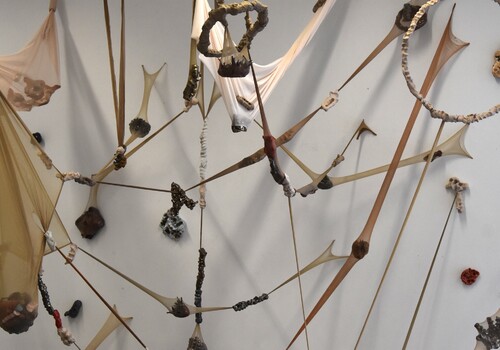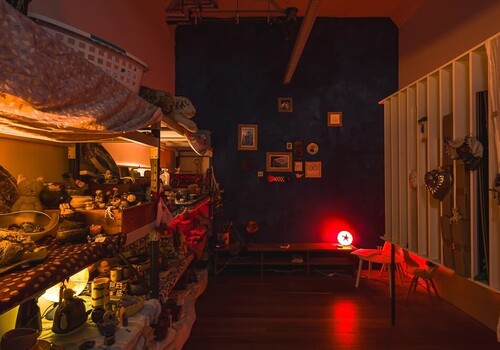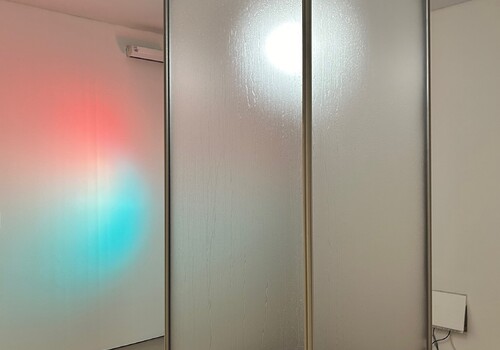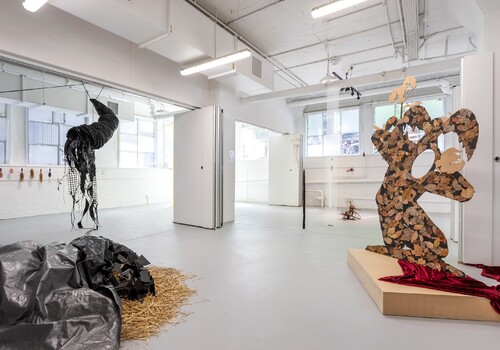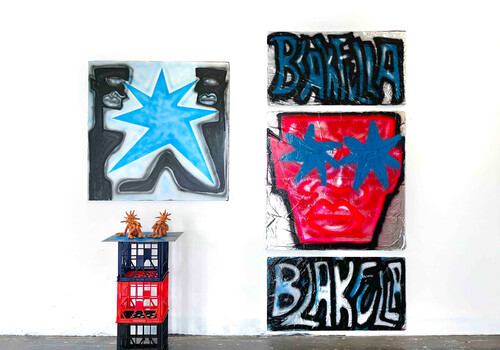Bachelor of Fine Art (Honours), Monash Art, Design and Architecture
By Indigo Meara
It’s late November, Trump has been re-elected, and everyone’s hay fever seems to be worsening each year. The usual elation of Melbourne’s graduate show season has been vacuumed by a combination of political defeat and histamine-induced malaise. Despite having witnessed the development of both Marcus Payne and Amelia Gill’s work throughout our shared Honours year, as a viewer I still find myself caught in a double bind of interpretive uncertainty. Their works generate a friction that cuts through the fatigue of the moment.
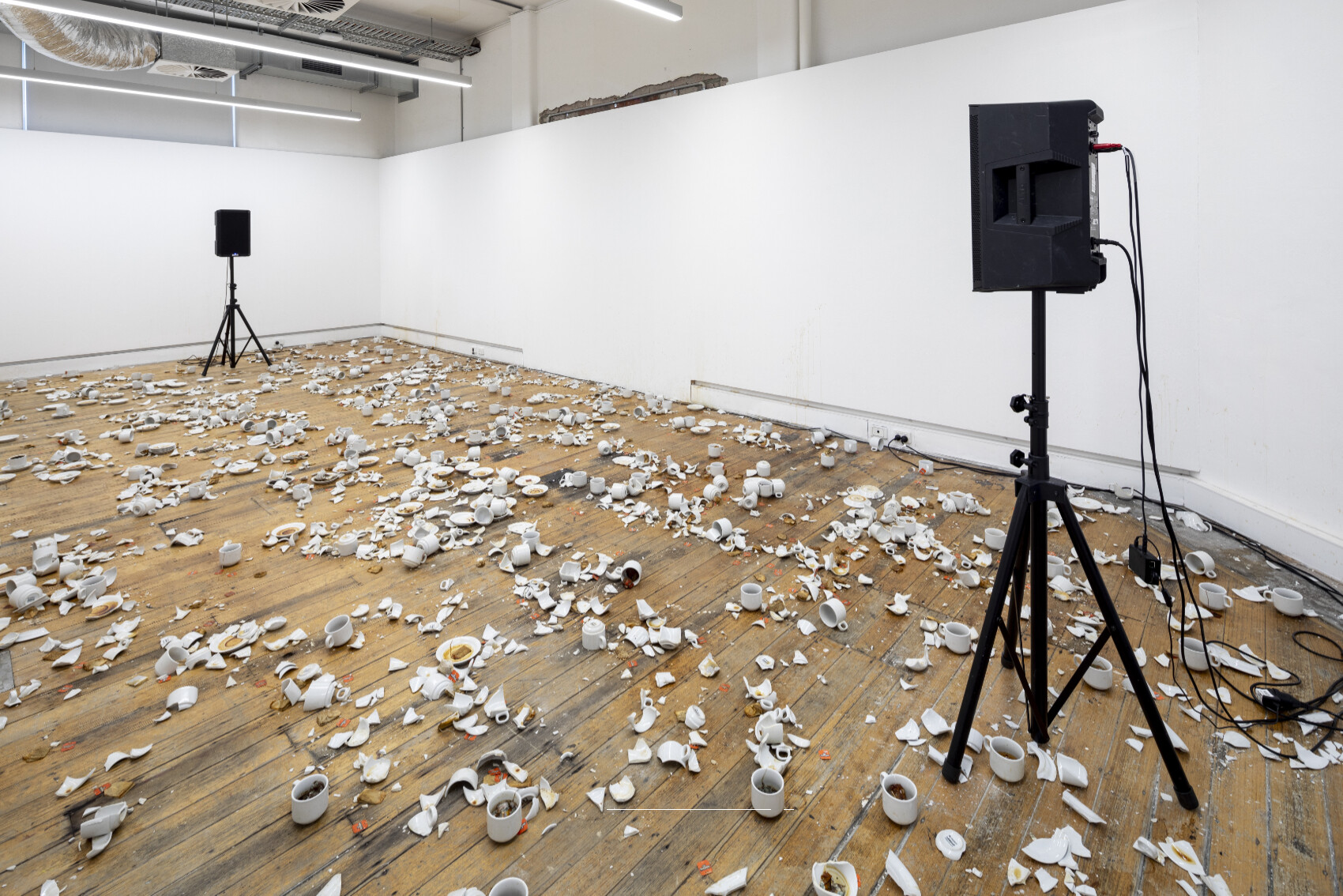
Marcus Payne, Discipline, 2024, soundtrack, 19:46 mins; Yorkshire Tea, 2024, teacups, saucers, Yorkshire Tea bags, full cream milk, sugar, water, dimensions variable. Photo: Andrew Curtis.
Marcus Payne’s installation Yorkshire Tea (2024) is sprawled out, halfway down the corridor of Monash’s Building D. Hundreds of smashed white porcelain cups and saucers litter the floor; to walk through the space is to have tiny shards embed themselves in the soles of your shoes. At full blast, snippets drawn from Instagram Reels, grind-culture podcasts, and productivity and body-modification TikToks play from two PA speakers. The care required to traverse the space works against its turbo tenor—like the aftermath of a tantrum. Splashes of tea stain the skirting boards. The two speakers, like bodies in confrontation, face each other across the detritus, speaking in unison—whether to address each other or themselves remains unclear. The speakers become a boxer and his coach: spitting, bleeding, and embracing in the ring. Or like a body, alone, flexing, slapping, and delivering a pep talk to its own reflection. Voice dominates the space, imploring and sermonic.
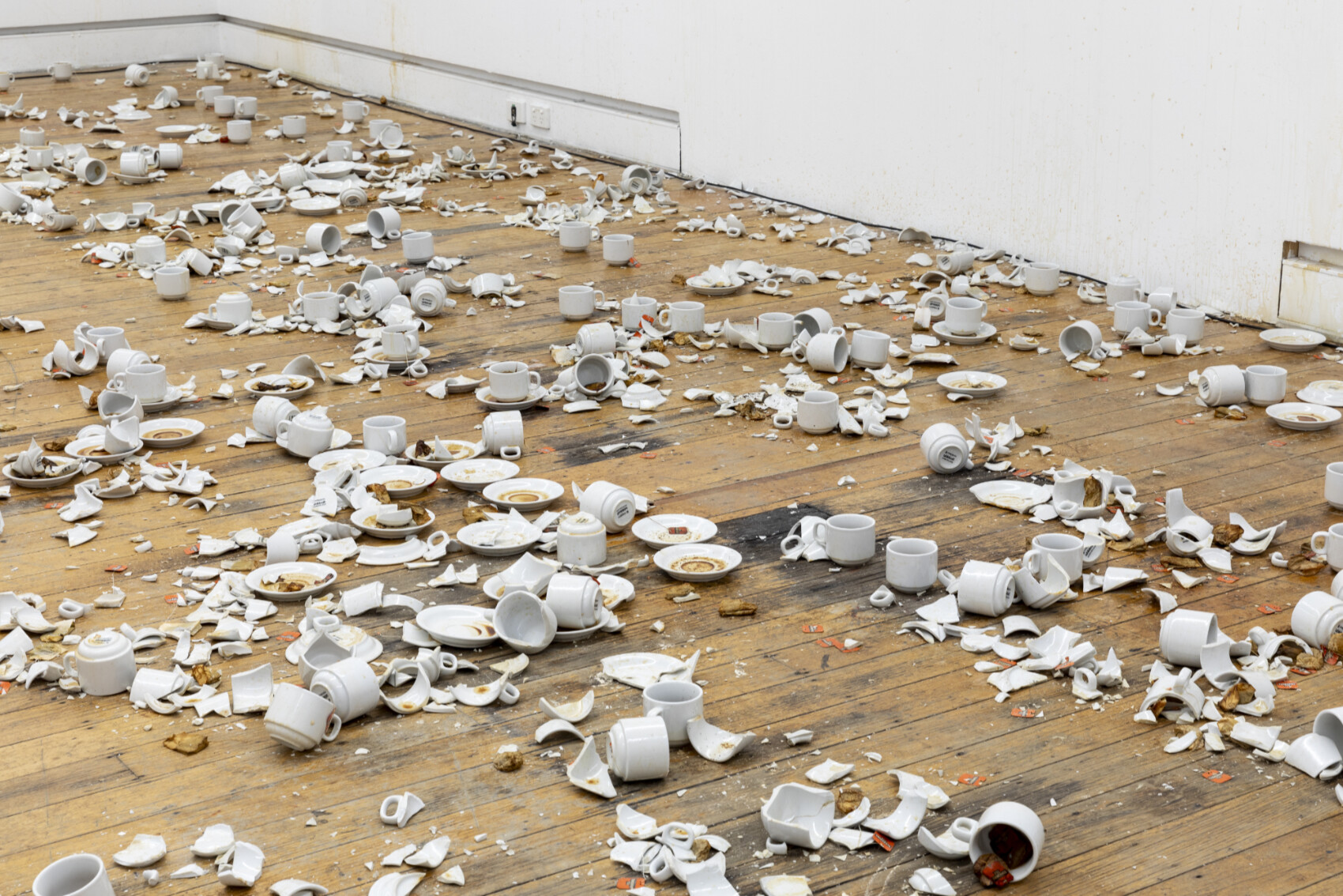
Detail of Marcus Payne, Yorkshire Tea, 2024, teacups, saucers, Yorkshire tea stain on wall. Photo: Andrew Curtis.
I think about scriptures, about God, incels and heartbreak. I think about the recently popular meme template: “Men used to go to war now they …”, usually followed by something along the lines of “unsend messages when you don’t respond.” Payne’s work disavows the soapbox on which work produced in the institution often finds itself balanced. It speaks from the floor, from the purge of the manosphere.
While the violence of Payne’s hyperbolic self-improvement mantras reverberates with a sense of a real and terrifying alienation, Amelia Gill’s paintings offer a more timid counterpoint, though they, too, wrestle with themes of violence, control, and desire.
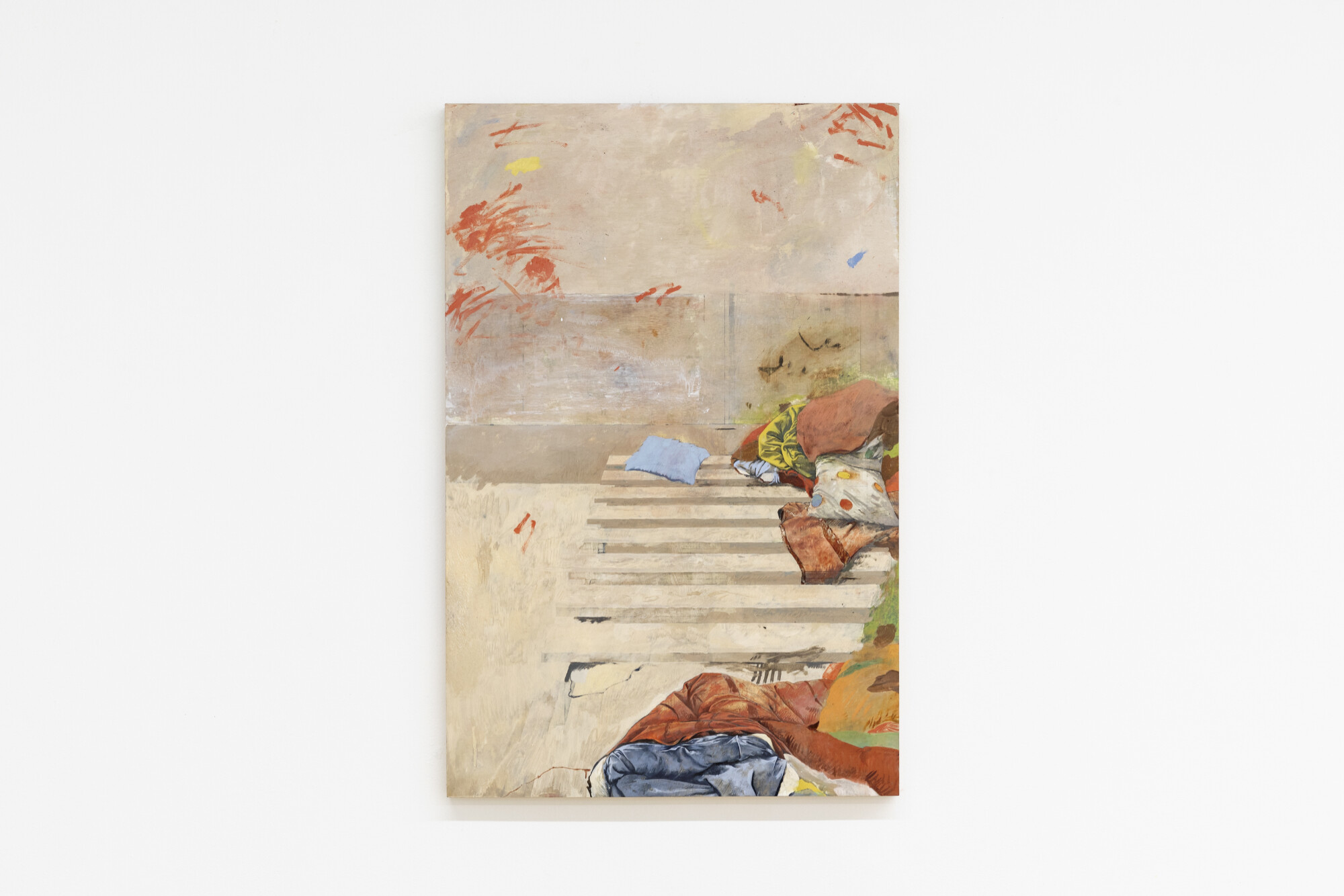
Amelia Gill, Britt, 2024, oil and tempera on panel, 72 x 110 cm. Photo: Andrew Curtis.
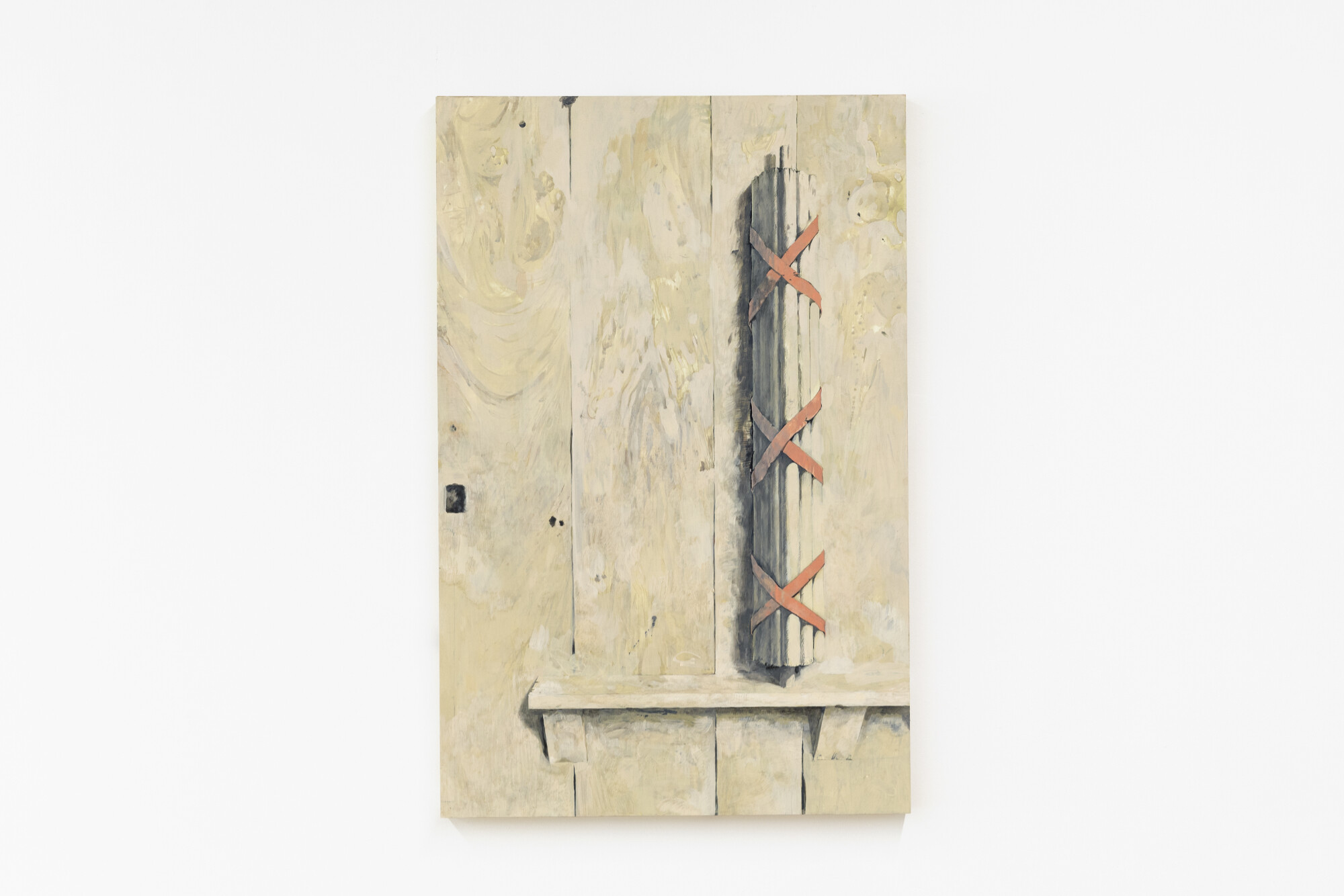
Amelia Gill, Sam, 2024, oil and tempera on panel, 72 x 110 cm. Photo: Andrew Curtis.
An ex once told me that, as a child, he had cut off all his eyelashes with nail scissors because someone said they were pretty. This anecdote emerged as a hinge, swinging these two bodies of work into each other.
Gill’s paintings brace themselves against me in the same ingrown way, though their ferocity is far slipperier, more opaque. The floor-to-ceiling window in the back half of MADA Gallery is left ajar, revealing the cream barn doors behind its glass façade. Tenderly rendered illustrations emerge through intricate layers of tempera wash. Inanimate and erotic, soft furnishings lie on the bare slats of a bed base in Britt (2024). A bundle of sticks is held tight with three bindings of red rubber that form an “xxx” in Sam (2024)—the cruelty of the slur they reference is taut and stings, but the work is also brimming with something close to tenderness, to a kiss (or three).
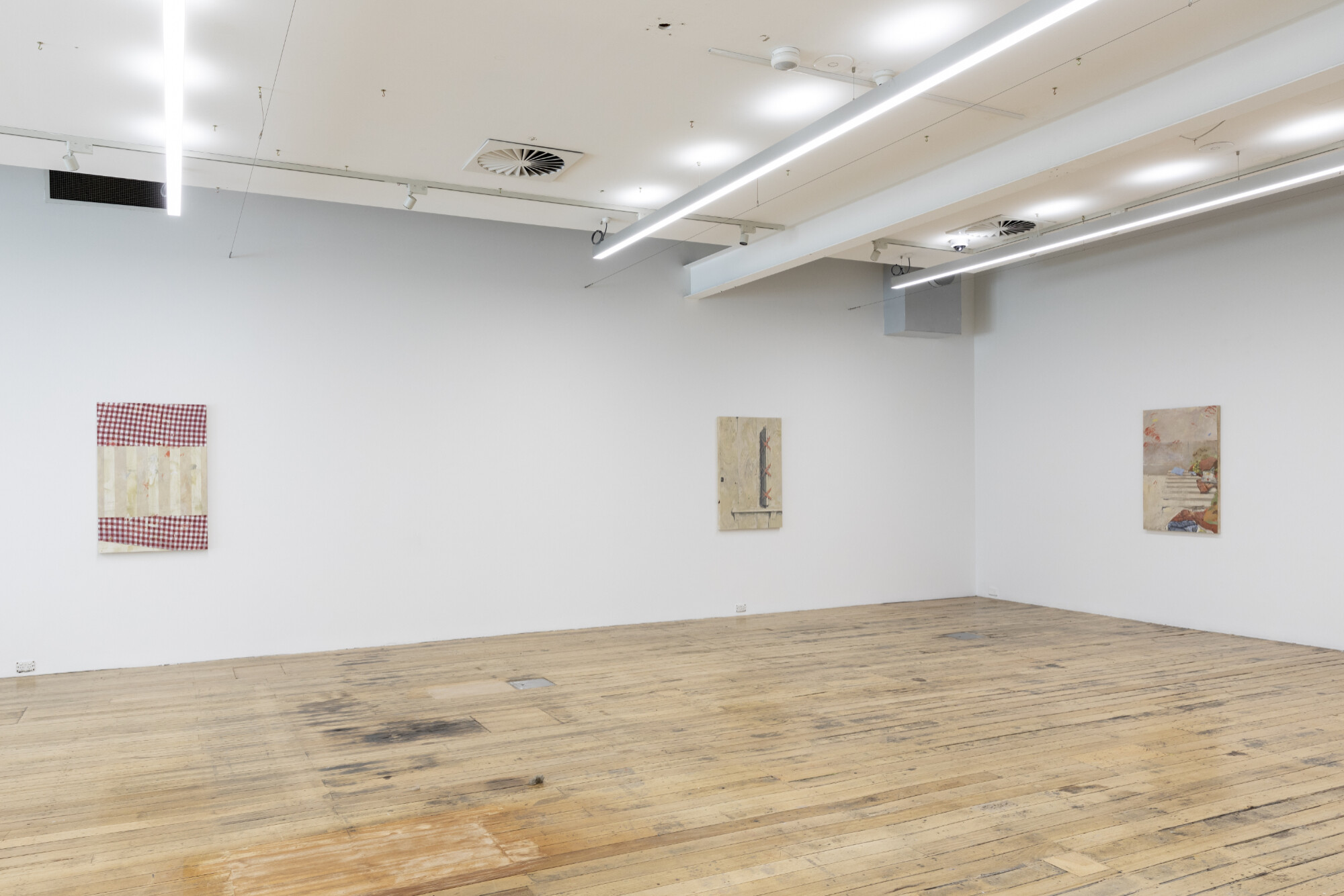
Amelia Gill, Julien, Sam, Britt, 2024, oil and tempera on panel, each 72 x 110 cm. Installation view. Photo: Andrew Curtis.
Loose and reaching, yet bound by orthodox painting praxis, Gill’s work is coded with gestures of humour and veiled references to personal sentiments—inside jokes and secrets that evade legibility. Glimpses of sincerity are trumped by smudges of sarcasm that leave me feeling silly for ever daring to read romance into the works. Passive-aggressive in their refusal to let you in on the joke or even allude to whose expense it is at, Gill’s body of work exudes a kind of cruel shyness.
To engage with Payne and Gill is to reckon with the sliding and colliding of these behaviours of care and restriction, cruelty and tenderness. It is to be disoriented by unrequited love, simping, shyness and violence—like a Brokeback brawl erupting to a kiss, like a hole punched in the wall, like a crush so big it could kill you.
Indigo Meara is a writer and artist from Naarm/Melbourne.
